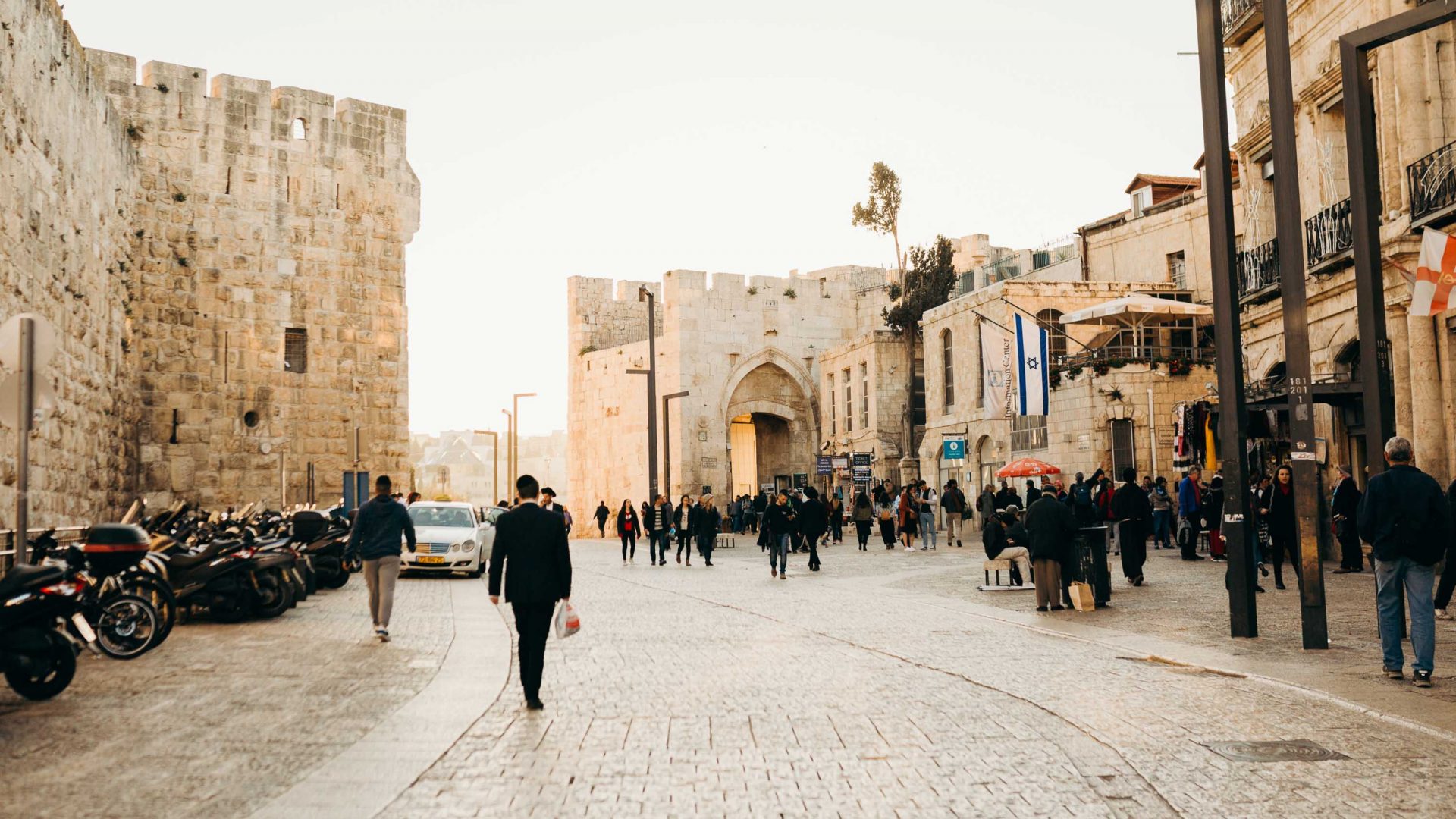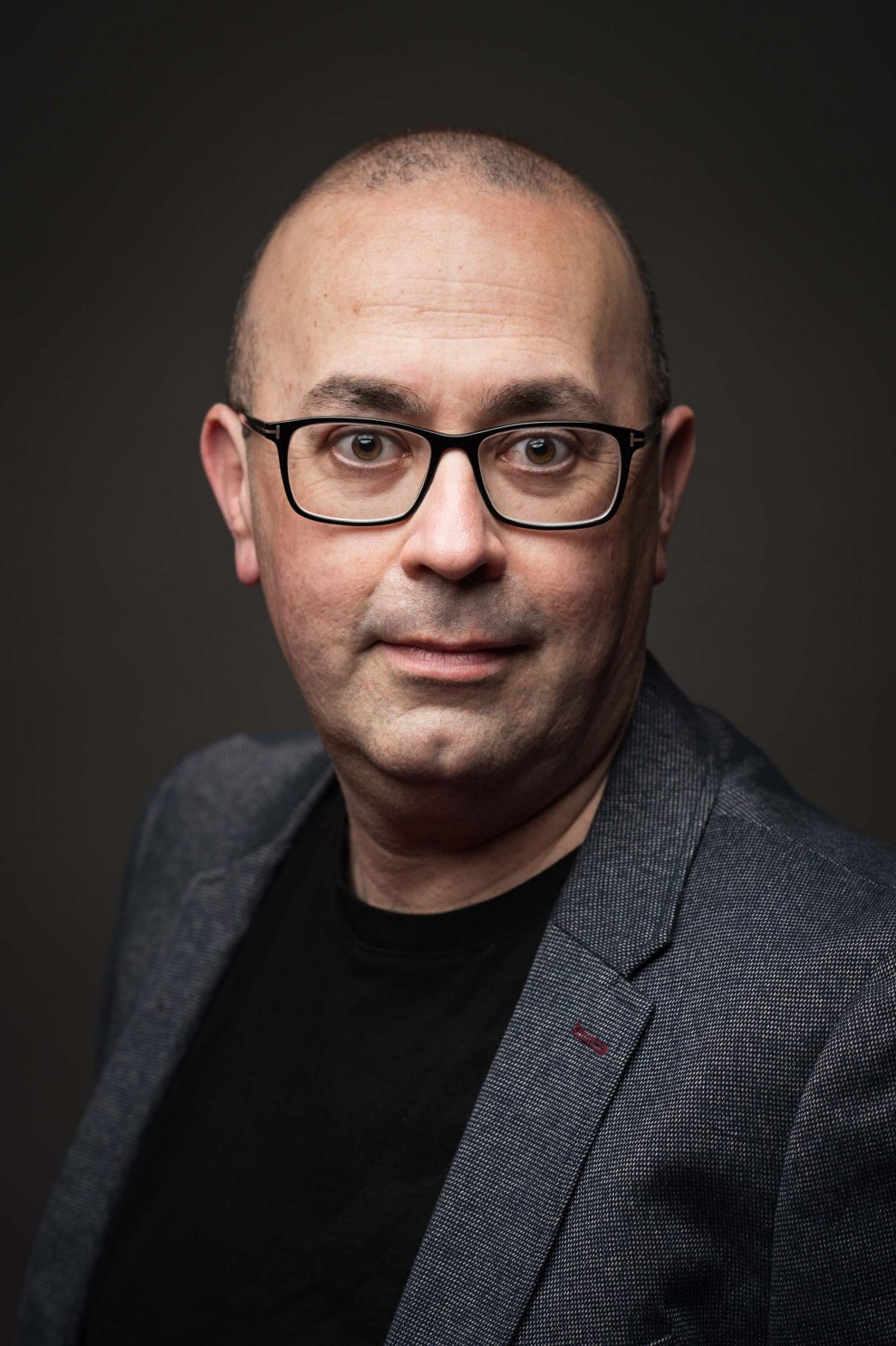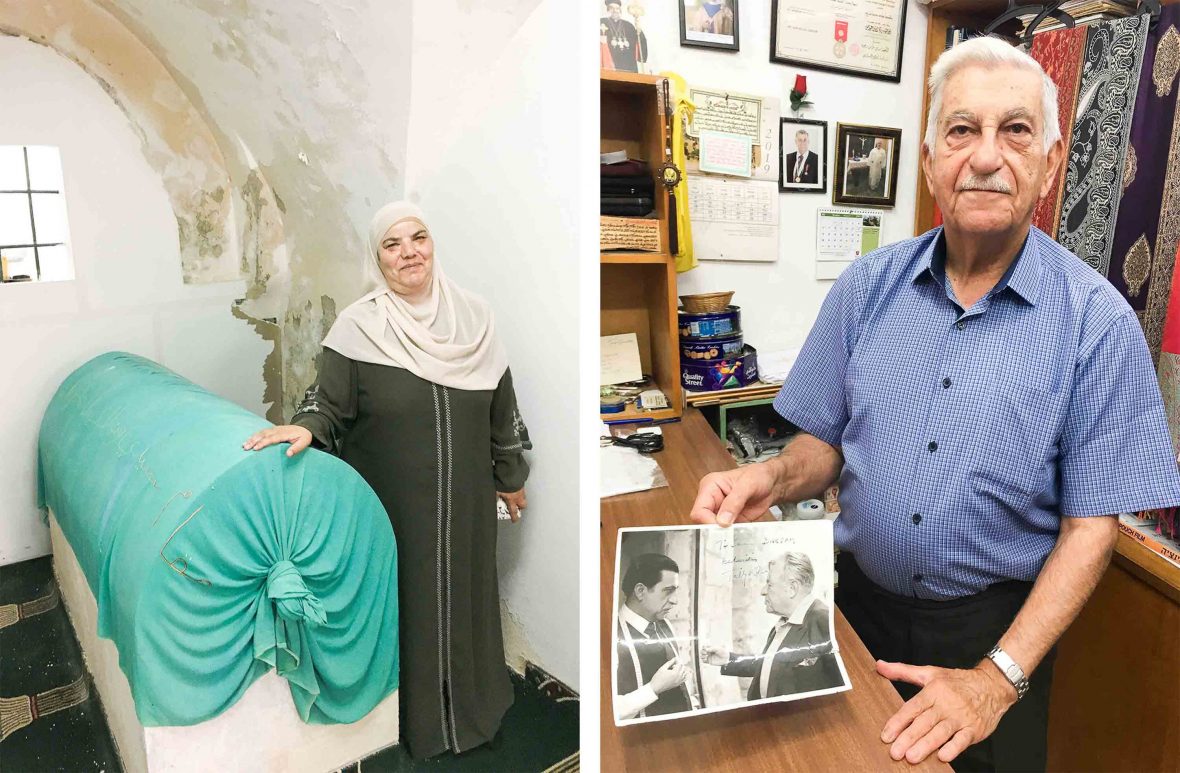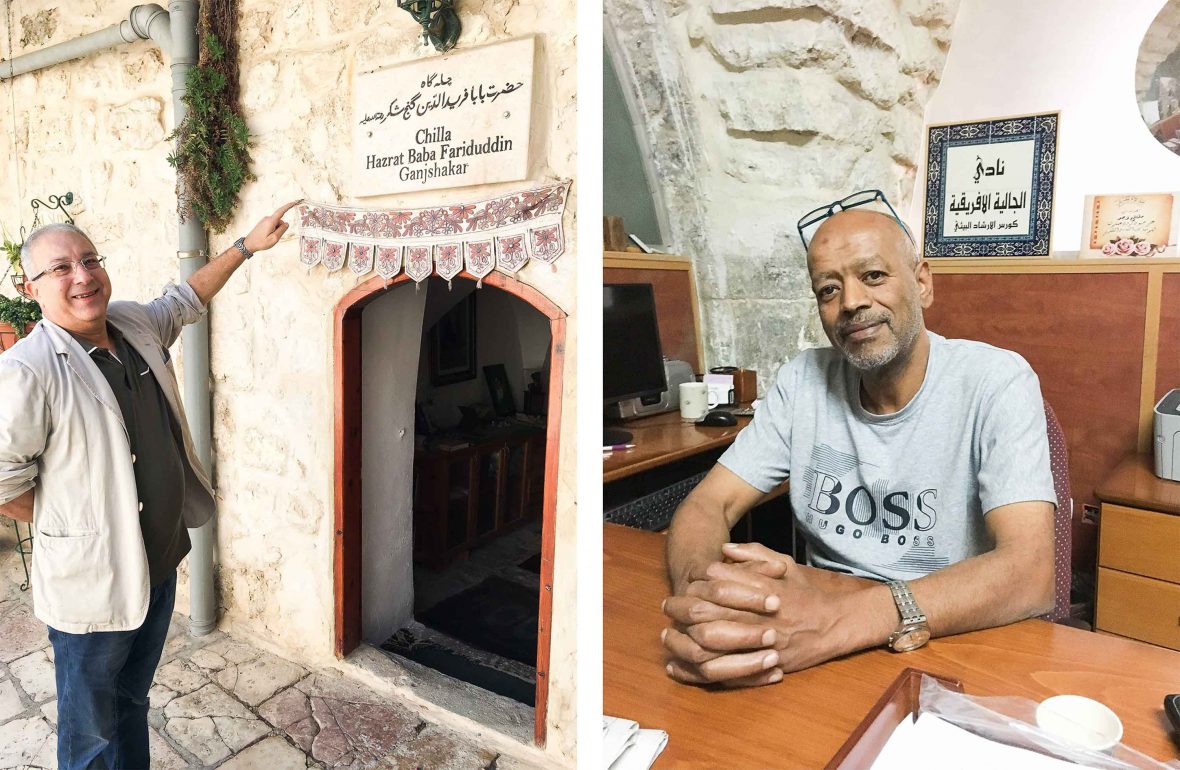
In his new book, Nine Quarters of Jerusalem, author Matthew Teller—fascinated by the Holy City after many visits—aims to present a new perspective on the Holy City. He tells us about the problems and joys of taking on this challenge.


In his new book, Nine Quarters of Jerusalem, author Matthew Teller—fascinated by the Holy City after many visits—aims to present a new perspective on the Holy City. He tells us about the problems and joys of taking on this challenge.
Documentary filmmaker and journalist Matthew Teller has been visiting Jerusalem since he was 11 years old. Subsequent visits would draw him closer and closer inside those city walls, and a growing sense that the Old City had ‘got under his skin.’
Through a series of interviews and encounters, while drawing on millennia of historical events, Teller sought to gain a better understanding of an often-misunderstood city: A city that frequently appears in news headlines, inspires pilgrims to make once-in-a-lifetime trips, and that’s shaped by colonialism. He realized the ‘Four Quarters’—Jewish, Christian, Muslim and Armenian—are little more than lines drawn on a 19th-century map. It was time to challenge the cartography of a complex, layered and ever-evolving city.
We spoke to Matthew Teller about his new book, Nine Quarters of Jerusalem, the importance of perspectives, and his own relationship to the Holy City.
Meera Dattani: With a book about a region that sparks so many conversations, were you nervous about its reception?
Matthew Teller: It’s been a liberation writing this book. By the end, I knew I’d written what I wanted, that it was good, and I didn’t care what anybody said! The enthusiastic reviews are great, of course, but what’s been particularly nice is positive feedback from people in Jerusalem, particularly from Palestinians. I was told I’d have difficulties publishing this as a Jewish person, but I haven’t felt that.
I was prepared for criticism that the book wasn’t ‘balanced,’ but that’s fine because there’s an imbalance in Jerusalem. There’s neither equity nor equality there, and I didn’t set out to cover this side and that side equally. I wanted to be truthful, and in Jerusalem, the truth is enraging. If you’re writing a book about Jerusalem that isn’t angry, you’re probably not understanding what you’re seeing.

How did your interest and fascination with Jerusalem start?
It’s a long story, and another reason why this book feels like a culmination of something in my life. My family is Jewish and I’ve been going to Jerusalem since I was 11—my first trip was a family holiday in 1980. I remember bits and pieces, like a distinctive smell, which I later learned was cumin. But I also remember the atmosphere of the city. That got into me.
My parents nurtured a sense of Anglo Zionism, which was the backdrop to my childhood. At one stage, they were even planning to emigrate to Israel. Although they stayed in England and didn’t emigrate until much later, there was always a focus on Israel, what Israel means, and Jewish observance, which never meant much to me. Although my background is Jewish, I’m not observant and now consider myself secular.
But that was the environment I was growing up in, with those viewpoints. After that first trip, we took more and more trips including my bar mitzvah, a coming-of-age ceremony when you’re 13 years old. My dad wanted me to have two—one at the synagogue at home in London, and another in Jerusalem at the Wailing Wall.
Writing about a city so complex and layered is no easy feat. What was your approach?
Through all those trips—and after my brother married an Israeli woman and we’d go to visit them—I began to understand my relationship to the city. But I never saw it as mine.
I was very aware of centuries of people like me—white, male, English, well-spoken, well-educated—opining about the Holy Land and Jerusalem and the Middle East and ‘claiming’ the city for themselves, or for Britain, or even for Christianity.
I wanted to keep those ghosts where they belong—in the past—and find new ways of telling the stories I grew up with.
You’ve lived in the Middle East too. How did your experiences inform the book?
Yes, I’ve lived in Cairo and Amman, and I’m lucky to have traveled a lot around the Middle East and the Gulf. I started to hear new stories about Jerusalem and other places I thought I knew. I realized that there was the 20 years of stories I’d heard growing up, but I was also absorbing 20-plus years of another narrative I’d not heard. Now, after that time and more—I’m 53 now—I can work out what I want to say.
It made me think about how people like me—outsiders, tourists, pilgrims, visitors—relate to a place. As with touristed cities anywhere, people come to Jerusalem with a tickbox: to pray at the church, visit the mosque, touch the Wall. Jerusalem is very focused on the holy places. But what lies between the visitor and the holy places is often seen as ‘getting in the way’—and that impediment is the people. The people who live there, who work there, whose kids go to school there.
“[The map of Jerusalem] is insidious—a corrosive underlying manipulation of how outsiders continue to perceive Jerusalem to this day.”
The walled Old City is small, just one square kilometre, but 35,000 people live there—90 percent are Palestinian. These are people trying to make a living, sometimes from tourism, sometimes not. But some visitors get annoyed, even angry, at their presence: “Why is there all of this standing between me and the culmination of my life’s spirituality?”
It seemed to me that the people were regarded as less important than the stones. That didn’t seem right. I wanted to write the people back into the city. It’s their place. It’s their home, their school, their hospital, their shop. I’m not ‘giving them a voice’—they have a voice. They’ve been yelling, but we’ve not been listening. What they need is a platform.

You also wanted to portray Jerusalem correctly—it doesn’t just have four quarters.
Everybody uses these maps of the Old City—tourists, the media, academia—and they show the Old City divided into four: Christian, Muslim, Armenian and Jewish. But when you’re there, there’s no division. Some maps show a sharp line, like it’s a border, like US states or the countries of Europe.
It’s divisive, separating the city into ethno-religious segments. It also creates a particular impression of Jerusalem, of Muslims, Christians and Jews butting up against each other along these borders, which isn’t the case. So I wanted to try and find out where this idea of the four quarters comes from.
It came from the British in the 19th century—a long story with a long political background! And it starts with a young clergyman, George Williams, appointed as the chaplain to the Bishop of Jerusalem in 1841.
Williams was part of a Protestant mission to convert people. But they couldn’t convert Muslims because Ottoman law said if you convert away from Islam, you’re subject to the death penalty. They couldn’t convert Catholics or Orthodox Christians, partly because there was no motivation within those communities to convert and partly because France was protecting Catholic rights and Russia was protecting Orthodox rights. So the mission’s energy went into converting Jews.
To evangelize effectively, the British needed to establish who lived where. Williams began conceiving of the city as divided into these ethno-religious enclaves. He published the first map showing the four quarters in 1849—and his divisions have survived through to the maps that we use now. They’re in every tourist office and all over the internet.
And this map, for all its errors, has really stood the test of time…
If you examine previous maps of Jerusalem, there are no quarters, but Williams’s version has survived because it suits a colonial narrative, part of a ‘divide-and-rule’ policy codifying separation and sectarian division. And it’s insidious—a corrosive underlying manipulation of how outsiders continue to perceive Jerusalem to this day. I found it interesting how people don’t just manipulate language but manipulate lines on a map to do that.
It also struck me that it’s about erasure. Maps of the US, for instance, show all the neat interlocking lines of the states, but what they don’t show are the lands of the indigenous Native American people who lived there for millennia before Europeans arrived. Settler colonialism means one cartographic reality has been imposed over another—the earlier one lives on invisibly in a kind of alternate psychogeography.
The map of Jerusalem does similar things. It erases the traditional neighborhoods that developed organically over centuries before the British arrived. One historian talks of 39 quarters of Jerusalem in the 13th century. Another wrote of 18 quarters in 1495. Some faded away and others emerged, but they’re still there. Palestinian people will refer to them in Arabic, but they’re rarely used in English and not at all in Hebrew.
“I got angry, unusually angry, at how this law has affected how Jerusalem is perceived.”
It’s as if outsiders won’t be able to grasp anything more complex?
Yes, it also excludes other communities there. I talked to African Palestinians, whose origins lie in Nigeria, Chad, and other parts of west and central Africa. There’s an Indian ‘quarter’, and a neighborhood of Dom Gypsy families who are neither Israeli nor Palestinian. A Syriac community lives and prays in the Armenian Quarter. There are churches in what’s labeled as the ‘Muslim Quarter’, and mosques in the Jewish Quarter. I even came across a community of Jews who are told they’re not even Jewish because they preserve ancient forms of worship that have been outlawed by mainstream rabbis!
Jerusalem, like any city, is fluid and ever-changing, with different realities overlaying each other, but one reading of it has been allowed to dominate.

You said earlier, “If you’re writing a book about Jerusalem that isn’t angry, you’re probably not understanding what you’re talking about.”
There’s a lot to get angry about in Jerusalem. Once you go a bit below the surface, you realize there’s tension everywhere. It’s a situation of extreme injustice that affects almost everyone in the Old City. I’ll give you one example.
When the British invaded and occupied Palestine in 1917, they brought with them ideas about how cities should be organized, particularly from the Arts and Crafts movement. This was a rurally-inspired reaction against industrialization that emphasized the importance of traditional craft skills, the dignity of hard work, and a romantic, medievally inspired folksy aesthetic. Modernism was arriving, yet in the 1920s, Jerusalem’s visual appearance was being dictated by British colonial officials steeped in these regressive ideas.
They brought in a law stating all buildings in Jerusalem had to be faced with a particular creamy-colored limestone that’s been quarried for millennia in nearby hills. This imposed a harmonious appearance across the whole city, and Israel kept the law in place, right down to today
But this uniformity, imposed by British officials who wanted Jerusalem to look like their version of a preserved medieval city, creates a strangely reverential atmosphere everywhere. As you move around in Jerusalem, you see how it turns even secular buildings into apparently holy buildings. I got angry, unusually angry, at how this law has affected how Jerusalem is perceived.
The Old City is part of the wider city—it’s connected to communities that have developed outside—yet it’s been set apart and given this unchangeable look. This law on stone cladding denies agency to the people whose city it is, to reimagine Jerusalem in the way that they want. A rural-inspired English colonial mindset that was regressive a hundred years ago is still crushing innovation today. And, conveniently, it favors the rich: Even if you can get a permit to build, if you can’t afford the stone, you can’t start. It shows how easy it is to mythologize and romanticize a city.

Travel writing is often guilty of centering the wrong people and romanticizing a place. You’re consciously trying not to.
I wanted to show the importance of listening to local people’s stories. Everybody has their version, their own interpretation, but when you listen to a lot of stories, you do build up a good picture of the place.
Especially when you think of all the white men from history behind me, who write about everywhere from their desk. “I went there, I came back, here’s my account of the place.” The difference between that and what I’m trying to do, is to amplify the voices of the people there. I wanted to give Jerusalemites a platform and then step back.
What do you hope people might take away from your book?
That readers see the lack of compassion there has been towards people living in Jerusalem. It’s been written about widely for its historical, spiritual and political significance—I wanted to add the human significance. If people take away one thing, it’s that I’ve humanized the people in a place that is so yearned-for.
And of course, I hope people realize the maps are wrong! I’d like those four quarters to fade away. If cartographers start producing maps that don’t show these rigid divisions, I’d be over the moon. But maybe that’s a bit too much to hope for from one book.
—-
Matthew Teller’s book, Nine Quarters of Jerusalem: A new biography of the Old City, is published by Profile Books (UK) and Other Press (US).
***
Adventure.com strives to be a low-emissions publication, and we are working to reduce our carbon emissions where possible. Emissions generated by the movements of our staff and contributors are carbon offset through our parent company, Intrepid. You can visit our sustainability page and read our Contributor Impact Guidelines for more information. While we take our commitment to people and planet seriously, we acknowledge that we still have plenty of work to do, and we welcome all feedback and suggestions from our readers. You can contact us any time at hello@adventure.com. Please allow up to one week for a response.

London-born-and-bred with a Ugandan-Indian heritage, Meera Dattani is Adventure.com's executive editor and an award-winning freelance travel journalist. Her stories center on food and cultural heritage, wildlife and conservation, and soft adventure, often through a lens of decolonizing and modernizing travel writing. Her work has been published in National Geographic Traveller, BBC Travel, Condé Nast Traveller, Olive magazine and many others.






Can't find what you're looking for? Try using these tags: